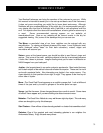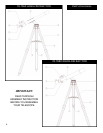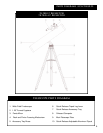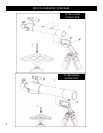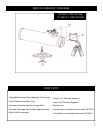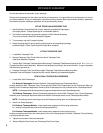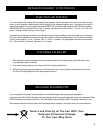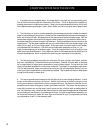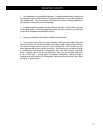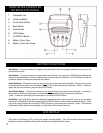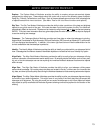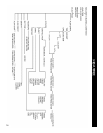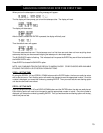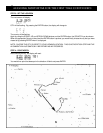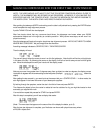
M
ENJOYING YOUR NEW TELESCOPE
1. First determine your targeted object. Any bright object in the night sky is a good starting point.
One of the favorite starting points in astronomy is the moon. This is an object sure to please any
budding astronomer or experienced veteran. When you have developed proficiency at this level,
other objects become good targets. Saturn, Mars, Jupiter, and Venus are good second steps to take.
2. The first thing you need to do after assembling the telescope as planned is center the desired
object in the finderscope’s cross hairs. Provided you did a reasonable job aligning the finderscope, a
quick look through the main telescope tube at low power should reveal the same image. With the
lowest power eyepiece (the one with the largest number printed on it) you should be able to focus
the same image that you saw through the finderscope. Avoid the temptation to move directly to the
highest power. The low power eyepiece will give you a wider field of view, and brighter image—thus
making it very easy to find your target object. At this point with a focused image in both scopes,
you’ve passed the first obstacle. If you don’t see an image after attempting to focus it in, you
might consider aligning your finderscope again. Once you pass this step, you’ll will enjoy the time
spent ensuring a good alignment. Every object you center in the finderscope will be easily found in
the main telescope tube, which is important for continuing your exploration of the night sky.
3. The low power eyepieces are perfect for viewing the full moon, planets, star clusters, nebulae,
and even constellations. These should build your foundation. However, for more detail, try bumping
up in magnification to higher power eyepieces on some of these objects. During calm and crisp
nights, the light/dark separation line on the moon (called the "Terminator") is marvelous at high power.
You can see mountains, ridges and craters jump out at you due to the highlights. Similarly, you can
move up to higher magnifications on the planets and nebulae. Star clusters and stars are best viewed
through the low power no matter what.
4. The recurring astronomical theater we call the night sky is an ever-changing billboard. In other
words, not the same movie plays all the time. Rather, the positions of the stars change not only
hourly as they seem to rise and set, but also throughout the year. As the earth orbits the sun our
perspective on the stars changes on a yearly cycle about that orbit. The reason the sky seems to
move daily just as the sun and the moon "move" across our sky, is that the earth is rotating about its
axis. As a result you may notice that after a few minutes or a few seconds depending on what power
you are viewing at, the objects in your telescope will move. At higher magnifications especially, you
will notice that the moon or Jupiter will "race" right out of the field of view. To compensate, just move
your telescope to "track" it in the necessary path.
10.




